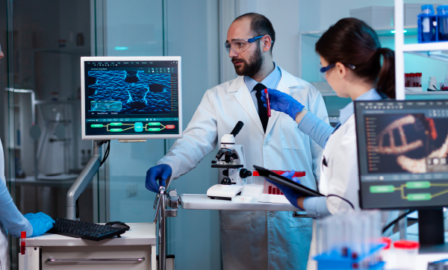What is the Future of Liquid Biopsy Diagnosis?
The promising outlook for liquid biopsy diagnosis has sparked the interest of many in the biotech industry. The speed, ease, and frequency at which these tests can be performed for oncological patients are just a few of the advantages the technology boasts over more traditional and invasive methods. As more companies look for innovations and new approaches to tried-and-true processes, there are opportunities not only for increased efficiency but for better engagement with patients.
Estimates project that the liquid biopsy market could be worth up to $20 billion for detecting stage two cancer and become worth even more if the technology is eventually able to find diseases still in stage one. Although the FDA has only approved one of these tests so far, companies haven’t shied away from investing their resources into forming liquid biopsy spin-offs and pushing their products through the pipeline. Leaders in the biotech space would benefit from being aware of how this technology is poised to change the field of diagnostics as part of the larger industry movement toward personalized medicine.
By searching for specific biomarkers within a patient’s blood sample, healthcare providers can detect the presence of a tumor and monitor how it’s responding to treatment. A study showed that one of these tests was also able to predict how long until a specific treatment a patient was using would become ineffective. Each kind of test looks for either circulating tumor cells, bits of tumor DNA, or specific proteins in the bloodstream as disease indicators. Currently, researchers are focusing much of their efforts on tests for lung, breast, colorectal, colon, and prostate cancers.
Liquid Biopsy Diagnosis Verses Tissue Biopsies
While liquid biopsy testing does offer a potential number of improvements over a traditional tissue biopsy, these diagnostic tools will need more clinical trials and additional refinements before more of them can enter the market. Researchers will need to ensure the tests balance both sensitivity and specificity in their results. Because the levels of metastasized tumor DNA can often be fairly low in the bloodstream, even for patients with advanced cancers, scientists must find a way to be able to register trace amounts without returning too many false positives. Despite those considerations, Guardant Health was still able to reach a rate of 94 percent accuracy in their ctDNA testing.
All this considered, liquid biopsies can still boast several advantages over current methods of screening. A CT scan or MRI may be able to indicate the presence of an abnormality, but imaging alone may not always be enough to tell whether a mass is benign or dangerous. Because tissue biopsies are often highly invasive, this newer method will likely see a higher rate of patient compliance. Liquid biopsies will also be cheaper and more easily conducted on a regular basis. Additionally, the turn-around time for results will likely only take two weeks instead of the current rate of about a month. Research shows that an early diagnosis for colon and cervical cancers can lead to a 50 percent increased chance of survival.
Looking Forward
Once a patient is diagnosed, healthcare providers would perform the test every four weeks as part of a patient’s routine oncology appointments in order to monitor progress. In the future, researchers envision that a liquid biopsy test that screens for the most common types of cancer would be integrated into a yearly physical checkup. While many companies are focusing on developing tests to detect certain groups of cancer types, others want to create a single test designed to catch a broad array. For example, the biotech company Illumina raised $1.6 billion this year for their spin-off Grail in order develop a pan-cancer liquid biopsy test.
The number of companies already working on liquid biopsy screenings doesn’t mean the field is too crowded for new players to join. The sheer number of cancer types combined with its market potential creates enormous room for growth. Liquid biopsy testing has the potential to increase the value of care for manufacturers, healthcare providers, and patients alike.
Subscribe to Clarkston's Insights
Coauthor and contributions by Sabrina Zirkle



